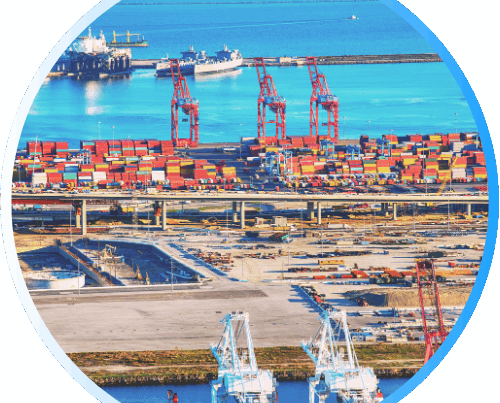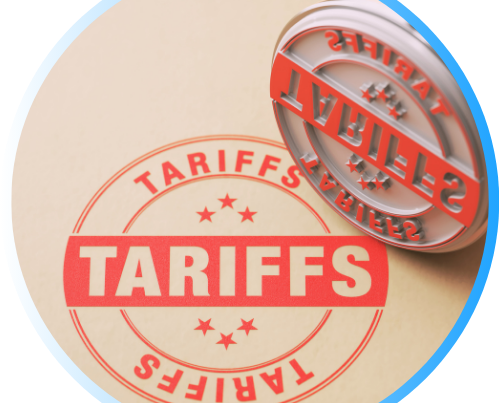Rate Related Update and Market Conditions
📌 Current U.S. Tariff Status (as of October 3, 2025)
-
CBP Operations During Government Shutdown: U.S. Customs and Border Protection (CBP) has confirmed that operations remain fully staffed with no reduction in personnel. Entry clearances, inspections, refunds, and permit processing continue without interruption, and Partner Government Agency (PGA) entries are also being processed as normal. However, delays have been reported at certain U.S. border crossings, where truck drivers are experiencing extended wait times.
-
New Tariffs Effective October 14, 2025: President Trump signed an executive order imposing duties on lumber, upholstered furniture, kitchen cabinets, and bathroom vanities. Effective October 14, softwood timber and lumber will face a 10% tariff, while select upholstered furniture, kitchen cabinets, and bathroom vanities will face a 25% tariff. Reduced caps apply to goods from the EU and Japan (15%) and the U.K. (10%). These tariffs will be eligible for duty drawback and are exempt from IEEPA reciprocal tariffs, potentially creating duty savings depending on country of origin and entry date through year-end.
-
Commerce Investigation into Hardwood Imports: The Secretary of Commerce will conduct an investigation into hardwood timber and lumber imports and domestic industry conditions, with findings due by October 1, 2026. The results could lay the groundwork for future duties.
-
U.S. – China Trade Agreement Deadline – November 10, 2025: The temporary trade agreement, which currently sets a 30% tariff on Chinese imports, is set to expire on November 10. Without a new deal, tariffs on Chinese goods will revert to 145%. Treasury Secretary Scott Bessent has signaled optimism for progress in late-October negotiations between President Trump, President Xi, and senior officials, though key issues remain around soybean imports and rare earth market access.
Source: whitehouse.gov, politico.com, whitehouse.gov
Rate Related Update and Market Conditions
Ocean Trade Lane Snapshot
Trans-Pacific Eastbound (TPEB)
Capacity in early October remains steady, but deployment is set to drop 30–35% in Weeks 41 and 42 as Golden Week blank sailings take hold. Demand stayed weak with no pre-holiday surge, and carriers have been building roll pools, causing increased rollings. Rates have softened back to August levels, with the next SCFI update due after the holiday.
Far East Westbound (FEWB)
Oversupply continues to weigh on Asia–Europe lanes, with volumes flat and capacity reduced by around 20% in Weeks 40 and 41. Through October, about a quarter of total capacity will be withdrawn. The SCFI slid to $971/TEU in Week 40, and carriers have announced GRIs for the second half of the month, though their impact remains uncertain. Rail operations on the China–Europe corridor have now fully resumed after Poland reopened its border with Belarus.
Trans-Atlantic Westbound (TAWB)
Northern and Southern European ports remain under heavy congestion. Antwerp faces 90% yard use and two- to four-day delays, while Hamburg and Bremerhaven see similar strain with five- to seven-day waits. Equipment shortages persist across Central and Southern Europe, limiting container availability. Spot rates, however, remain stable in the $1,800–1,900/FEU range since mid-September.
Air Freight Market Update
Across Asia, pre-holiday demand has kept space tight, especially out of North and South China, where flight cancellations and ecommerce cargo added further strain. Markets in Vietnam, South Korea, and Cambodia also saw significant congestion, while Taiwan and Malaysia remained relatively stable with only localized bottlenecks. Rates are holding at elevated levels for both Trans-Pacific and Asia–Europe routes, though conditions are expected to ease gradually after October 7 as the Golden Week surge passes and operations normalize.
Sources: xeneta.com, maersk.com, yangming.com, evergreen-line.com, supplychaindive.com
Asia–Latin America Freight & Port Update
1) Freight Rate & Capacity Snapshot
Average spot rates on Asia→Latin America remain under downward pressure, tracking broader global softness during China’s Golden Week; Drewry’s WCI fell 5% w/w to $1,669/FEU on Oct 2. Lane-specific public quotes for Far East→South America were unclear this week, but Xeneta’s weekly shows continued cooling on major corridors. Carrier capacity management stays active: 8% of scheduled sailings are withdrawn across weeks 41–45.
Sources: drewry.co.uk ; xeneta.com ;
2) Port Operations & Infrastructure
Brazil (Santos): Operations are stable; DP World & Hapag-Lloyd renewed a 10-year contract at Santos on Oct 2, signaling continuity of container handling capacity.
Sources: porttechnology.org

Port of Los Angeles Plans New Terminal to Support Long-Term Cargo Growth
The Port of Los Angeles has unveiled plans for a new 200-acre, two-berth container terminal designed to meet projected growth through 2040 and beyond. The project, known as Pier 500, is expected to take about 10 years to complete once construction begins. Together, the Los Angeles–Long Beach port complex handled 19.9 million TEUs in 2024 and is projected to reach a combined 40 million TEUs by 2040.
USTR Tariff Measures Could Add $3.2 Billion in Costs to Container Shipping by 2026
New tariffs imposed under USTR Section 301 will introduce significant costs for carriers operating Chinese-owned or Chinese-built vessels calling U.S. ports. Starting October 14, fees of $50 per net ton per voyage will apply to Chinese-operated ships, while non-Chinese carriers using Chinese-built tonnage will face charges beginning at $18 per net ton. According to Alphaliner, these measures could total $3.2 billion by 2026, with fee levels increasing annually through 2027.


